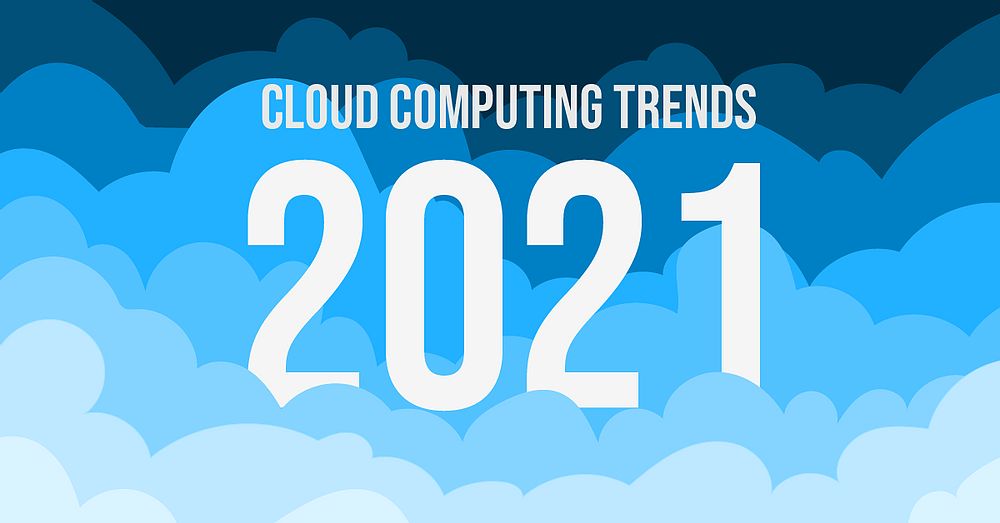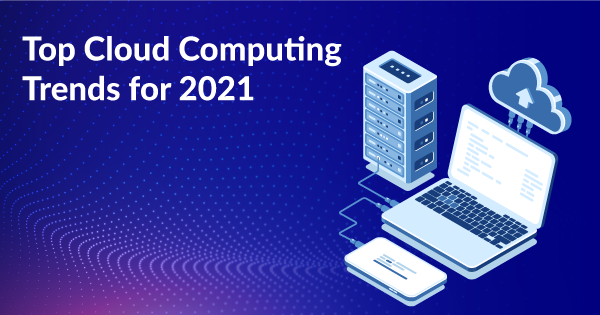Cloud Computing Trends: With the global pandemic came to the need for everyone to go cyber, not just programmers and web development specialists. Cloud computing has now become more important as the world has gone digital. Now, the market is growing at a breakneck pace, with more businesses using cloud computing than ever before. According to a survey from Research and Markets, it is projected to expand from $371.4 billion in 2020 to $832.1 billion by 2025.
Contents
What is CLOUD COMPUTING?
When data is stored on the internet instead of on a server or device, it is referred to as cloud computing. It enables on-demand access to services such as apps, servers, and data storage, among other things. Amazon Web Services, NetApp, and Google Cloud are among the largest CSPs. Customers effectively borrow the technology to store services while they use CSPs. This reduces IT costs while still allowing for faster scalability. Cloud computing will benefit both large and small enterprises, from corporate e-commerce to your neighborhood coffee shop.
Cloud computing is used by all of the utilities we use on a daily basis. Gmail, Alexa, and Siri are examples of smart home applications, as are streaming sites like Netflix and social media networks like Facebook. It growing become difficult to keep up with the current developments and improvements as the cloud computing market continues to expand and evolve. So, to help you make sense of all the latest stuff, we’ve put together a list of the top seven cloud computing developments to watch in 2021.
Cloud Computing Trends 2021:

1. Sustainable cloud:
Consumers don’t only see companies as a list of their best products or services; they also see them as a reflection of ideals, according to 2020. Your attitude toward the world will have a significant impact on how consumers perceive your business. In reality, out of nine possible areas of interest, 80 percent of customers rank sustainability as the most critical factor to consider when assessing organizations.
Creating revenue at the detriment of morals would alienate a sizable portion of your customers, with half of them willing to leave products that contradict their personal ethics. According to our findings, organizations with better environmental, social, and governance efficiency have lower uncertainty and 4.7 times higher margins. With 44 percent of CEOs targeting net-zero futures for their companies, it will become extremely necessary for you to take benefit of the cost-effective cloud operations open to you.
2. Cloud costs:
In 2011, the average company spent around $6,500 on cloud computing. This figure is expected to climb to $10,000 a month by 2020. This is a modest number, as 33% of companies have a cloud budget ranging from $2.4 million to $12 million per year. The fastest-growing cloud services are the IoT, Container-as-a-Service, and artificial intelligence, confirming IT professionals’ claims that cloud optimization is a top priority for their companies. Organizations are trying to streamline infrastructure costs and maximize cloud resources, with 30% of cloud budgets getting wasted.
3. Edge computing:
Edge computing is a new cloud trend that entails constructing localized data centers for computation and storage near or at the point of use. This reduces cloud load and facilitates the rollout and operation of a vast range of applications.
Computing and administration are managed locally rather than by unified networks. Edge computing eliminates the latency problems involved with connecting with a central server by putting active control and data storage closer to the source. It also saves bandwidth by saving data locally and linking to the cloud only when required. A locally operated data center means a higher degree of information management for organizations struggling with privacy and regulatory problems.
4. Hybrid cloud:
A mixed cloud method categorically relies on reaping the benefits of both the private and public cloud, while a multi-cloud approach integrates the varying allowances of multiple providers—regardless of the cloud platform. Businesses will get the best of both worlds with a well-balanced mix approach. They will grow deeper and quicker as a result of the public cloud’s advanced and scalable offerings, without sacrificing the higher cost performance, better response time, and regulatory enforcement that comes with the private cloud’s capabilities.
5. Cloud security:
Cybercrime increased by 630 percent between January and April 2020, when new methods of operating provided new bugs to hack. Spreading workloads across many cloud providers poses a significant governance challenge for businesses. It’s no joke that 65 percent of senior IT executives think protection and regulatory risks are the biggest roadblocks to achieving cloud benefits. Creating and delivering cross-platform observations necessitates a strategic strategy that is responsive to possible blind spots.
While the cloud’s reliability in terms of time and resources is its most common aspect, businesses are discovering that cutting corners on the cloud will make their corporate processes invisible, allowing cybercriminals to enter from a variety of discrete entry points.
Conclusion:
In 2021, cloud computing, which aided the global economy, global supply chains, and distributed workforces during the coronavirus pandemic, will remain a key goal for businesses seeking greater scalability, market continuity, and cost-effectiveness.





More Stories
5 Reasons to Employ Monitoring Software in The Classroom
Navigating the Digital Wild West: How ByteSnipers Fortifies Your Bremen Business
Demystifying the Different Types of Network Access Control Methods